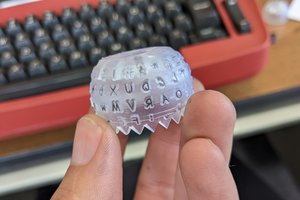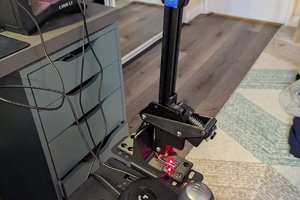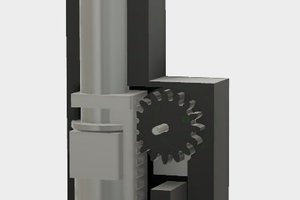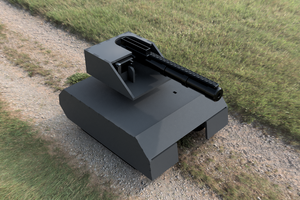This tool was built to support my circuit sculpture projects like the KISS Tindie Blinkies band (link to Hackaday.io project)
Wire Spool Holder With Straightener
A 3D-printed holder for a spool of wire, with an integrated mechanism to straighten wires as they are pulled off the spool
 Roger
Roger Version 2 addressed that issue by raising its working surface so wire would not get under bearings. However, a 3D printer has problem holding precise tolerances and so shaft holes had to be drilled out before the shafts would fit. This changed position enough that final bearing spacing didn’t work well.
Version 2 addressed that issue by raising its working surface so wire would not get under bearings. However, a 3D printer has problem holding precise tolerances and so shaft holes had to be drilled out before the shafts would fit. This changed position enough that final bearing spacing didn’t work well.
 After stopping and thinking about the problem, I thought perhaps I’m over-complicating the device. As an introduction, I’m only dealing with 18 AWG wire. This is fairly easy to bend so perhaps I don’t even need bearings – simple shapes might be enough. Hence version 4 replicated the round (but not rolling) surfaces in a wave
After stopping and thinking about the problem, I thought perhaps I’m over-complicating the device. As an introduction, I’m only dealing with 18 AWG wire. This is fairly easy to bend so perhaps I don’t even need bearings – simple shapes might be enough. Hence version 4 replicated the round (but not rolling) surfaces in a wave











 Sam Ettinger
Sam Ettinger

 Giovanni Leal
Giovanni Leal
 Ramón Calvo
Ramón Calvo
Thank you for sharing your project. I am currently trying to modify the OnShape design to suite my needs (i.e., 20 gauge craft wire). Based on your logs above, where can I find the detailed instructions to fine tune the straightener to my application? Thank you again!